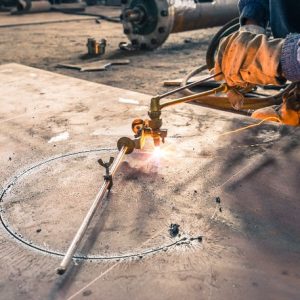How to Operate a Pallet Jack
Whether you work in shipping, logistics or any industry that handles heavy loads, chances are you use a pallet jack at one point or another. Learn the basics of operating this versatile tool and you can safely maneuver loads around your workplace.
Pallet jacks consist of two large steer wheels, a hydraulic pump and load forks. They’re operated using a handle and control lever.
Lifting
A manual pallet jack has a metal handle and control lever that allows the operator to manually move, lift and lower the prongs. A powered pallet jack (also known as an electric or walkie pallet jack) uses buttons and a hydraulic pump to operate the same function as a manual one.
Stand behind the pallet jack and push it over to the item you need to lift. Position the jack so that its prongs are underneath the skid you want to raise. Locate the plastic release lever attached to the center bar on the handle. It may be a different color than the rest of the handle or it pallet jack may not be marked at all. Push the lever up and toward you at an angle. This causes the piston inside the hydraulic pump to rise, causing the wheels and forks to lift up.
Once the prongs are in place and the pallet jack is elevated, slide them to the side of the skid and pull the control lever into the down position. Then, move the jack to your destination and steer its prongs directly in front of the pallet you need to transport. Ensure that the jack is clear of any obstacles such as stray construction materials and electric cords before moving it. Also, make sure the pallet jack is plugged back into its charging station when not in use.
Pushing
When moving pallet jacks, it’s generally better to push them than pull them. This allows the user to use their larger and stronger leg muscles rather than their smaller back muscles. Additionally, pushing eliminates the twisting of the body that can cause back injuries. It also provides the user with more control to maneuver away from obstacles and sudden stops that can be problematic.
Before attempting to move a pallet jack, make sure that the route you are taking is clear of obstacles. This includes stray construction materials, electric cords, and other hazards. It’s also a good idea to keep access to the machine restricted so that only authorized users can operate it. This can be done by assigning a security code to the machine or using a sign-in sheet to track who is using it.
To move a manual pallet jack, first find the plastic release lever located in the center of the rounded handle. It’s usually marked with a different color of plastic or otherwise easily identifiable. Push the lever down and toward the center of the pallet jack. This will drop the forks down so that they are about an inch off the ground.
Now you can start to move the jack. While doing this, be careful not to hit or run over anything that might damage it or get caught under the forks. You should also be aware of the jack’s load capacity and steer clear of inclines or slopes.
Pulling
The way a pallet jack is operated depends on its type, but both have the same basic mechanism: a control lever that raises and lowers the forks. It also steers the equipment, which has large wheels on the bottom for moving it around. Regardless of whether it’s electric or manual, a person should always push rather than pull the pallet jack to maneuver it. This helps prevent twisting the body, which could cause lower back injuries. Additionally, pushing requires less energy than pulling because of the way human bodies are designed.
With the pallet jack’s control lever in the neutral position, steer it to where you want to place the load. Then, line up the prongs with the fork openings on the pallet board and slide them inside. Once the forks are positioned, put the control lever down in a pumping motion to “jack” the pallet jack up onto the pallet.
Once the pallet jack is on the pallet, move the handlebars to a forward position and use the hydraulic pump to drive it towards its destination. Avoid bumping the jack into walls or other objects as this can damage them. You should also keep the load no more than 1 inch off the floor because a higher center of gravity makes it unstable. If you’re moving the jack around corners, have someone “spot” you to reduce the risk of crushed toes, scraped knuckles or pulled backs.
Transporting
Pallet jacks are used in numerous industries to move heavy loads and improve efficiency. Despite their simple appearance, they can pose a significant hazard if not pallet jack handled correctly. By following these tips, workers can avoid crushed toes, trips, scraped knuckles and pulled backs.
Before using the pallet jack, inspect it to ensure that the forks are properly aligned with the gaps in the pallet boards and that the load does not exceed its maximum capacity. Also, clear a path of any obstructions that could hinder movement. The handle is located near the base of the frame and has a lever that operates a hydraulic pump to raise and lower the forks. The steer wheels are located below the handle and help maneuver the pallet jack to where it needs to go.
The control lever on the handle can be rotated to change the direction of the steer wheels. While pushing the jack, be sure to use even, steady motions and slow down when approaching corners or narrow spaces. Avoid sudden jolts or movements, as these can throw off the pallet jack’s center of gravity and make it unstable.
If the load is too large for the pallet jack, consider using a roller dolly to transport it instead. This alternative is usually cheaper than renting a forklift and provides a more stable transportation surface. Additionally, regular lubrication of the pallet jack’s moving parts reduces friction and wear, while periodic inspections can spot potential damage or problems before they become serious.





